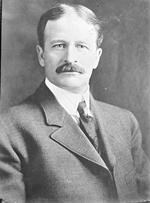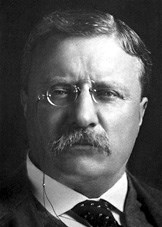
As people began to settle the area, support grew for the idea of preserving the Tower as a national or state park. In February 1892, Wyoming Senator Francis E. Warren (1844-1929) wrote the Commissioner of the General Land Office (GLO) seeking to protect Devils Tower and the Little Missouri Buttes (located several miles to the northeast). Using the Forest Reserve Act of the previous year, the GLO set aside 60 square miles (38,400 acres), as a temporary forest reserve. By June 1892 the reserve was reduced to 18.75 square miles (12,000 acres), with the remainder being reopened to settlement. Acting on the advice of the GLO, Senator Warren proposed that the reserve be set aside for a national park. At this point the reserve still included the Tower and the Little Missouri Buttes. On July 1, 1892, Senator Warren introduced a bill (S. 3364) in the United States Senate for the establishment of "Devils Tower National Park." The bill was read twice by its title and referred to the Committee on Territories. However, records indicate that Congress took no further action on the proposal. The area would remain protected as a forest reserve.

It was not until fourteen years later that Devils Tower became a national monument. Due to lack of congressional support a different avenue of protection was sought. The Antiquities Act of 1906 offered a new opportunity for protecting the Tower. This act allowed "objects of historic or scientific interest" to be set aside by the president. Wyoming Representative Frank W. Mondell (1860-1939) lent his support to the plan to have the area preserved as a national monument. Mondell was a member and later chairman of the House Committee on Public Lands. Due in large part to the influence of Mondell, President Theodore Roosevelt proclaimed Devils Tower as the first national monument on September 24, 1906. The acreage set aside was only 1,153 acres, believed by the president to "be sufficiently large to provide for the proper care and management of the monument" under the terms of the Antiquities Act. The Little Missouri Buttes were not included in the monument area. The remainder of the reserve was opened to settlement in 1908. 
Some question whether Theodore Roosevelt (1858-1919) ever visited Devils Tower. Early residents of the region claim he visited the place on a hunting trip through the Black Hills; others say he was present during the dedication. However, no evidence exists to validate these claims. In 1903 Roosevelt made an extended tour through the West, stopping at Gillette, Moorcroft and Sundance, WY. It is likely he saw the Tower from a distance during the tour. It is known that Roosevelt possessed a deep appreciation for natural history; this appreciation led him to set aside over 200 million acres of public lands during his time as president. These lands included national forests, federal bird reserves, national parks, and national monuments. Information originally compiled by Ray H. Mattison, Historian for the National Park Service, 1955. |
Last updated: August 11, 2025
